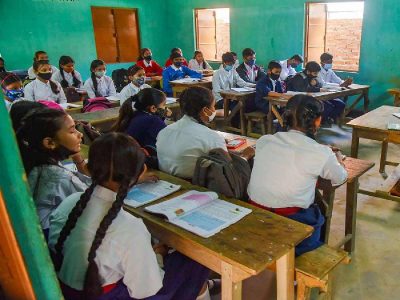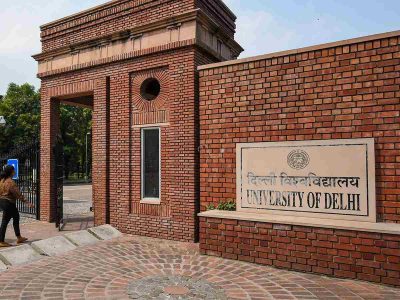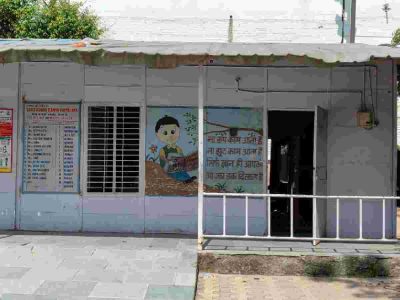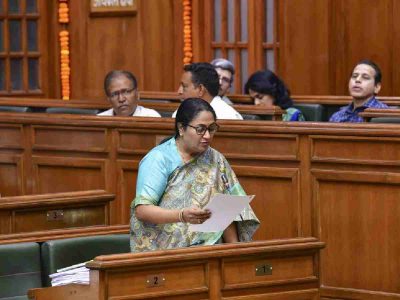As Prime Minister Narendra Modi gets ready to attend the convocation, the concluding centenary function of Delhi University (DU) on June 30, as its chief guest, it is time to remember the stalwarts who were present at the first convocation of DU that was held on March 26, 1923.
Delhi was a tiny city in 1923 compared to what it is today. Back then, DU had just three colleges – St Stephen’s College, Hindu College and Ramjas College. Now, the university has 90 colleges, dozens of departments and countless students, teachers and employees.
Lord Reading, the then Viceroy of India, and Hari Singh Gaur, were the Chancellor and Vice-Chancellor of DU respectively. Naturally, they were there when the first convocation was held.
Perhaps, old Delhiwallas would recall that Mandir Marg in Gole Market was earlier known as Reading Road after the former Viceroy.
Rai Kedar Nath, a rich landlord belonging to the Anand Parbat area, who established a series of Ramjas schools and a college in the memory of his father Lala Ramjas, was also present at the inaugural convocation.
Which Pak PM’s wife taught in DU?
Professor Riaz Umer, who was the principal of Zakir Husain Delhi College (formerly Delhi College) for 17 years, says, “There were two faculties in DU in 1923: Arts and Science and eight departments: English, History, Economics, Sanskrit, Arabic, Persian, Physics and Chemistry. The early days of DU were very humble. The DU University Library started in 1923 with a collection of 1,380 gifted books.”
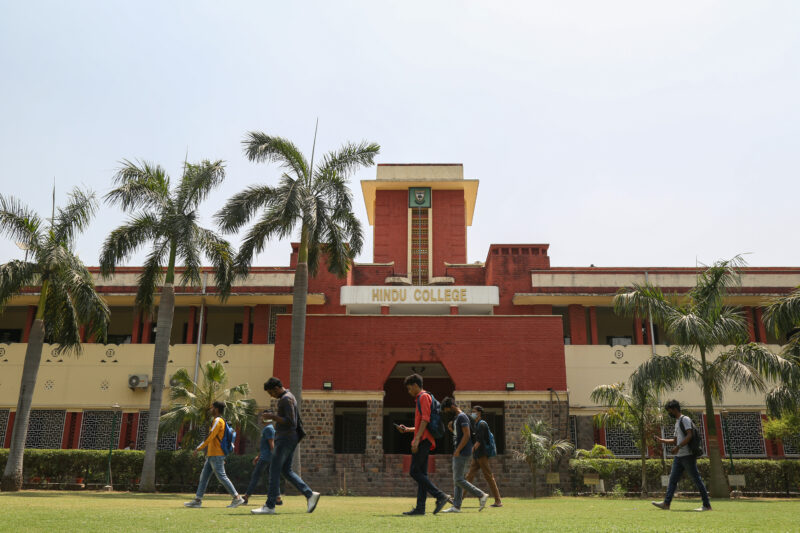

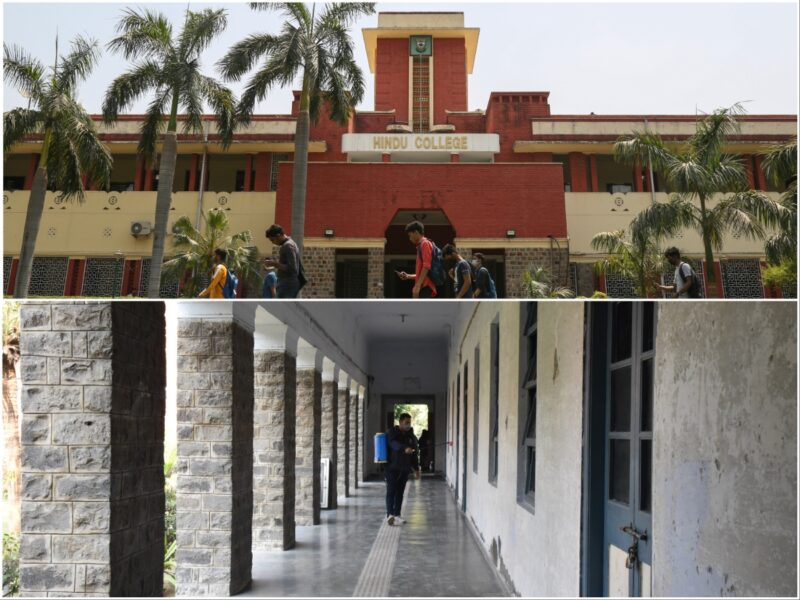
In 1924, Indraprastha College for women came up. It was a big initiative by DU as IP College was the first women’s college in north India. Gul-e-Rana, the wife of first Prime Minister of Pakistan, Liaquat Ali Khan, was teaching here when partition of the country took place.
In 1925, the old Delhi College was revived as Anglo-Arabic College (present day Zakir Husain Delhi College) and got affiliated with the University. The number of DU colleges increased to five.
Maurice Nagar to Gwyer Hall
Maurice Gwyer, a British lawyer, was appointed vice-chancellor in 1938. He was a visionary and workaholic.
“Gwyer presented a memorandum to the Government of India outlining his vision of an all India university in the Capital and wished for a complete overhaul of the University of Delhi,” says Umer.
In 1948, Hansraj College and Miranda House (women’s college) were also established. Sir Maurice Gwyer is credited to have founded Miranda House. Fittingly, DU named the first students’ hostel after Gwyer in 1948. Further, the University Hall was named as Gwyer Hall and Rajpur Quarters as Maurice Nagar.
The Delhi University Teachers’ Association (DUTA) was constituted in 1945.
According to Harish Khanna, a Delhi assembly member from Timarpur in 2013 and one who has served as DUTA general secretary, “The DUTA has done yeoman service for the rights of teaching community. DUTA members always take stance on key issues related to DU as well as the country.”
Once India got freedom, DU made further strides. New colleges, hostels and facilities were established. There was a strong feeling among the DU community to make it world class.
A special convocation to celebrate silver jubilee of DU was held in 1948, which was due in 1947. It was attended by the then Prime Minister Pt Jawaharlal Nehru, Lord Mountbatten, Union education minister Maulana Abul Kalam Azad, Union health minister Raj Kumari Amrit Kaur, and noted scientist Shanti Swarup Bhatnagar.
Walter George’s contribution
Do you know Miranda House has some strong ties with Connaught Place (CP)? Well, Miranda House and CP’s Regal building were designed by Walter George.
George even designed St Stephen’s College and Sujan Singh Park. As far as Shahrukh Khan’s alma mater Hansraj College is concerned, it was founded on July 26, 1948 in the memory of prominent Arya Samaj educator and nationalist Mahatma Hansraj of Lahore.
“His bust is placed inside the college building and we all bow before it,” says Rama, the principal of Hansraj College.
The coming years saw further expansion.
In 1949, the then deputy Prime Minister Sardar Vallabhbhai Patel laid the foundation stone of the All-India Tuberculosis Institute, now known as Vallabhbhai Patel Chest Institute.
The venerable Delhi School of Economics (DSE) was also set up under the eyes of legendary Professor VKRV Rao. The likes of ex-PM Manmohan Singh, Raj Krishan, AM Khusro, Sukhamoy Chakraborty and Amartya Sen also taught there. If we talk about DSE, we have to talk about the very rich Ratan Tata Library there.
Considered one of the best equipped libraries in economics and allied fields in Asia, the Ratan Tata Library has a wide collection of literature on social sciences and business material, which serves as a rich resource pool for the students and faculty.
US vice-president’s links
The red brick building of Lady Irwin College, designed by Edwin Lutyens, was inaugurated in 1932. Not many people know that the US vice-president Kamala Harris is linked to it. Shyamala Gopalan, the mother of Kamala Harris, studied here.
Lady Hardinge Medical College (founded in 1916) got affiliated to the University of Delhi in 1950. It is perhaps the first all-women medical college in Asia.
Shri Ram College of Commerce (SRCC) was established in the main campus in 1951. It is a different matter that it was being administered from the building of Commercial School in Daryaganj.
“It is a flagship college of DU. When it comes to commerce, nothing to beat SRCC,” says Riaz Umer.
SGTB Khalsa College was also founded that very year in Dev Nagar, Karol Bagh.
“When it was established, youngsters from Karol Bagh, Patel Nagar and other west Delhi colonies used to join it. Noted Hindi writers Maheep Singh and Janardan Dwivedi (former Congress MP), Ashok Prasad and Subba Rao, one of the founders of People’s Union for Democratic Rights (PUDR), also taught there. Ashok Prasad now teaches in Colorado University,” informs Punjabi poet Harmeet Singh ‘Pahar Ganj’, who studied here and later taught and served as its principal.
Khalsa College was established in the main campus in 1975.
Then seven more colleges — Gargi College, Kalindi College, Maitreyi College, Mata Sundri College for Women, Swami Shradhanand College, Shaheed Bhagat Singh College, and Nehru Homeopathic Medical College and Hospital were established in 1967. Jesus and Mary College was established in 1968.
DU now has a strong presence in south Delhi.
Established in 1973 as an effort to cope with its expansion, the South Campus moved to its present location on Benito Juarez Marg, near Dhaula Kuan, in 1984. It is spread across 28 hectares (69 acres).
Meanwhile, DU’s first college trans Yamuna was Shyam Lal College in Shahdara. It was established in 1964.
Presidents to Prime Ministers
DU can boast of the fact that many of its alumni have become heads of the states of their respective countries.
Pakistan’s President Muhammad Zia-ul-Haq studied at St Stephen’s college from 1941 -1945. He even visited his alma mater in 1983 when he was here to attend the Non-Aligned Movement summit.
India’s fifth president Fakhruddin Ali Ahmed also studied at St Stephens’s College. Aung San Suu Kyi, the controversial leader from Myanmar, was a student of Lady Sri Ram College. Currently in jail, Aung San Suu Kyi served as the State Counsellor (de facto head) of Myanmar.
Bingu Mutharika, former president of Malawi, an African nation, graduated in B. Com. (Hons) from Shri Ram College of Commerce in 1961. After his graduation, he pursued masters degree from the Delhi School of Economics for two years. GP Koirala was in Kirori Mal college before he became the Prime Minister of Nepal.
And now, the Indian Prime Minister Narendra Modi is set to become part of it when he attends the finale of centenary of the university.


